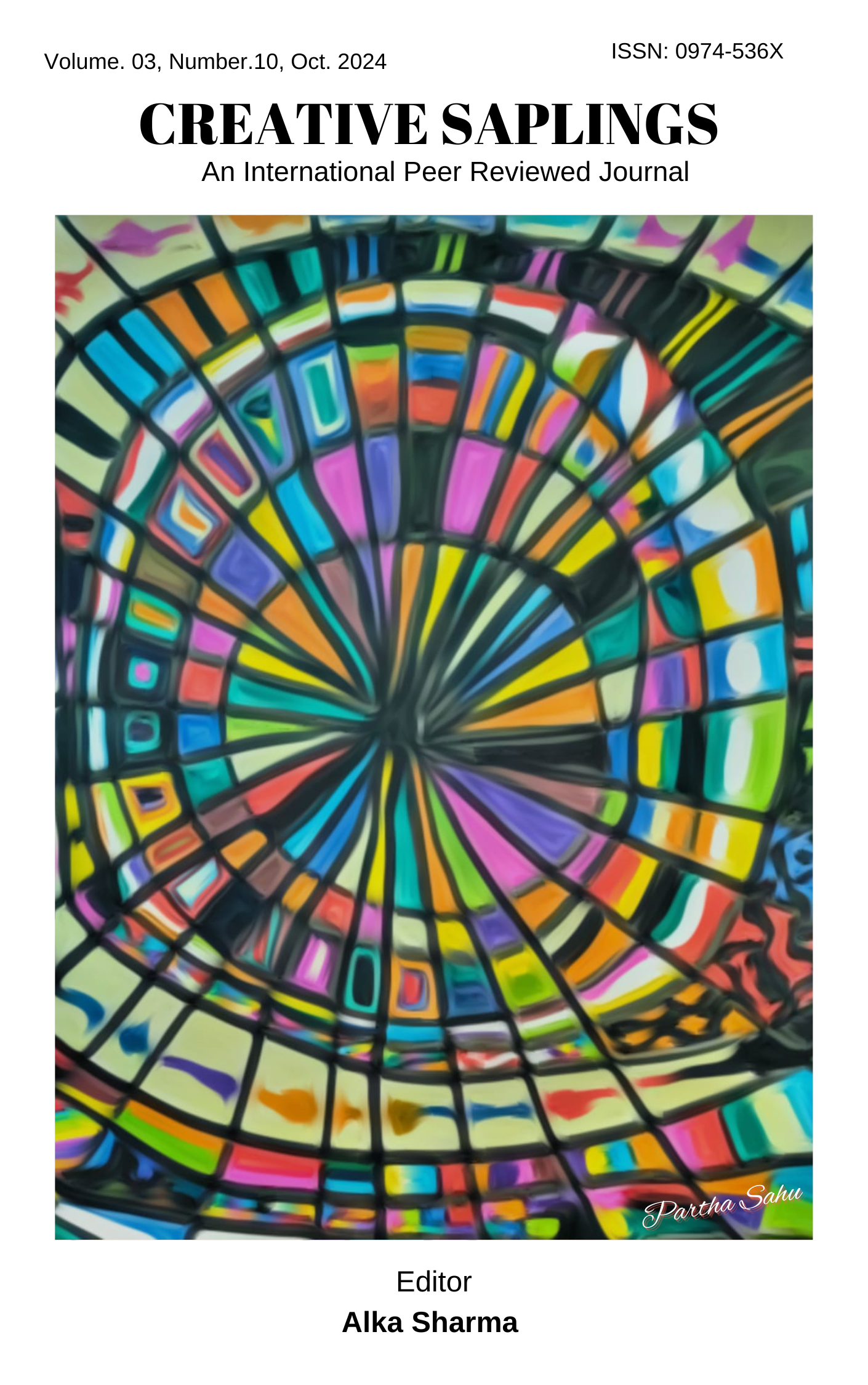Self-fulfilling Prophecy of The Arabian Nights As Reflected in Feminist Young Adult Literature
DOI:
https://doi.org/10.56062/gtrs.2024.3.10.780Keywords:
One Thousand and One Nights, Predictive Processing, Scheherazade, Social Neuroscience, World Literature, Self-fulfilling prophecy, Feminist Young Adult literature.Abstract
This paper analyzes the social-psychological phenomenon of Self-fulfilling Prophecy (SFP) through The Arabian Nights, and the feminist Young Adult (YA) literature. Significantly, the literature of two extreme ages and cultures provides universal messages. Application of Social- Neuroscience concept of Predictive Processing (PP) simplifies the understanding of SFP. In the troubled age of One Thousand and One Nights, Scheherazade narrated strange and intriguing tales to King Shahryar. The folktales provided a unique insight towards peacefully resolving a dreadful conflict. Ignorant of the supposition or reality of the gripping stories, the absolute ruler meditated on Scheherazade’s recitals like a follower. Her mesmerizing presence and tapestry of words calmed him. The Emperor gave up his ruthless decisions of executing a woman every day, and he developed a sense of forbearance with her stories as they helped him to transcend the mistrust of women. Today’s YA texts are also like Scheherazade’s narratives in tough times. The nobility of thoughts, courage to lead, and critical analysis can help humankind to emerge in a brave new world. Through her brilliant wit, leadership, care, and didactic philosophy, Scheherazade elevated herself from a ‘storytelling slave’ to ‘First Feminist’. The Arabian Nights resembles the innovative literary universe of YA literature with absorbing themes, current world issues, mythological adaptations, and speculative fiction. Reading about female leaders in YA literature awakens the world towards alternative solutions to critical world problems. These texts cultivate vital thinking and problem-solving skills in adolescents preparing for adulthood.
Downloads
References
Burton, J. ‘Christopher Sly’s Arabian Night: Shakespeare’s The Taming of the Shrew as World Literature’. Journal for Early Modern Cultural Studies, vol. 14, no. 3, Summer 2014, pp. 3–30.
Burton, Richard F., editor. The Book of the Thousand Nights and a Night. H.S. Nichols & Co, 1885, https://ia902700.us.archive.org/19/items/arabiantranslat01burtuoft/arabiantranslat01burtuoft.pdf.
Campbell, Lori M., editor. ‘Underestimated Overachievers’. A Quest of Her Own: Essays on the Female Hero in Modern Fantasy, McFarland and Company, 2014.
Cart, Michael. ‘The Value of Young Adult Literature’. American Library Association, 8 May 2008, http://www.ala.org/yalsa/guidelines/whitepapers/yalit.
Clark, Andy. ‘A Nice Surprise? Predictive Processing and the Active Pursuit of Novelty’. Phenomenology and the Cognitive Sciences, vol. 17, no. 3, July 2018, pp. 521–34, https://doi.org/10.1007/s11097-017-9525-z.
Day, Sara K., et al., editors. Female Rebellion in Young Adult Dystopian Fiction. Ashgate Publishing Limited, 2014.
Fenske, Claudia. Muggles, Monsters and Magicians: A Literary Analysis of Harry Potter Series. Peter Lang, 2008, https://books.google.co.in/books?id=209bSZOwMYoC&printsec=frontcover.
Frith, Chris. Making up the Mind: How the Brain Creates Our Mental World. John Wiley & Sons, 2013, https://books.google.co.in/books?hl=en&lr=&id=qTkWO7hErD4C&oi=fnd&pg=PT9&ots=vFv_eJe4QX&sig=P0E3RXqEawkLo0_Y-jLjaha2W2o&redir_esc=y#v=onepage&q&f=false.
Hanisch, Carol. ‘III. Issues: Consciousness Raising: The Personal Is Political’. Notes from the Second Year: Women’s Liberation in 1970, edited by Shulamith Firestone, 1970, p. 128, https://dukelibraries.contentdm.oclc.org/digital/api/collection/p15957coll6/id/1160/page/0/inline/p15957coll6_1160_0.
Kelly, Michael P., et al. ‘The Brain, Self and Society: A Social-Neuroscience Model of Predictive Processing’. Social Neuroscience, vol. 14, no. 3, May 2019, pp. 266–76, https://doi.org/10.1080/17470919.2018.1471003.
Mahdi, Muhsin, editor. The Arabian Nights (New Deluxe Edition). Translated by Husain Haddawy, W. W. Norton & Company, 2008.
Merton, Robert K. ‘The Self-Fulfilling Prophecy’. The Antioch Review, vol. 8, no. 2, Summer 1948, pp. 193–210, http://www.jstor.org/stable/4609267.
Millett, Kate. Sexual Politics. Columbia University Press, 2016, https://books.google.co.in/books?id=fAJeCwAAQBAJ&pg=PR3&dq=Kate+Millett+1970+sexual+politics&lr=&source=gbs_selected_pages&cad=3#v=onepage&q=sexual%20politics&f=false.
Pinault, David. Storytelling Techniques in the Arabian Nights. Brill Publishers, 1992.
Roozbeh, Roohollah. ‘The Influence of Thousand and One Nights on Samuel Taylor Coleridge’. Journal of Lyrical Literature Researches, vol. 17, no. 33, 2019, pp. 133–48, https://doi.org/10.22111/jllr.2019.4861.
Scheherazade: From Storytelling ‘Slave’ To ‘First Feminist’. Online, 9 June 2013, https://www.npr.org/2013/06/09/189539866/scheherazade-from-storytelling-slave-to-first-feminist.
Seth, Anil K., et al. The Cybernetic Bayesian Brain - from Interoceptive Inference to Sensorimotor Contingencies. Open_MIND, 2015.
Stevens, Hugh. Henry James and Sexuality. Cambridge University Press, 2008.
‘The Arabian Nights: The Frame Tale’. Encyclopædia.Com, 25 Apr. 2020, https://www.encyclopedia.com/arts/culture-magazines/arabian-nights-frame-tale.
The Arabian Nights, Volume I : The Marvels and Wonders of The Thousand and One Nights. The Penguin Group, 2015, https://books.google.co.in/books?id=khudBAAAQBAJ&printsec=frontcover&source=gbs_ge_summary_r&cad=0#v=onepage&q&f=false.
‘The History of the Arabian Nights’. Pook Press, https://www.pookpress.co.uk/project/arabian-nights-one-thousand-and-one-nights/.
‘The Sultan and His Vow’. The Arabian Nights Entertainments, Rand McNally & Company, 2006, p. 293, https://www.gutenberg.org/files/19860/19860-h/19860-h.htm.
Downloads
Published
Issue
Section
License
Copyright (c) 2024 Devendar Sandhu, Nandini Sahu

This work is licensed under a Creative Commons Attribution-NonCommercial 4.0 International License.





